-Audrey Sage
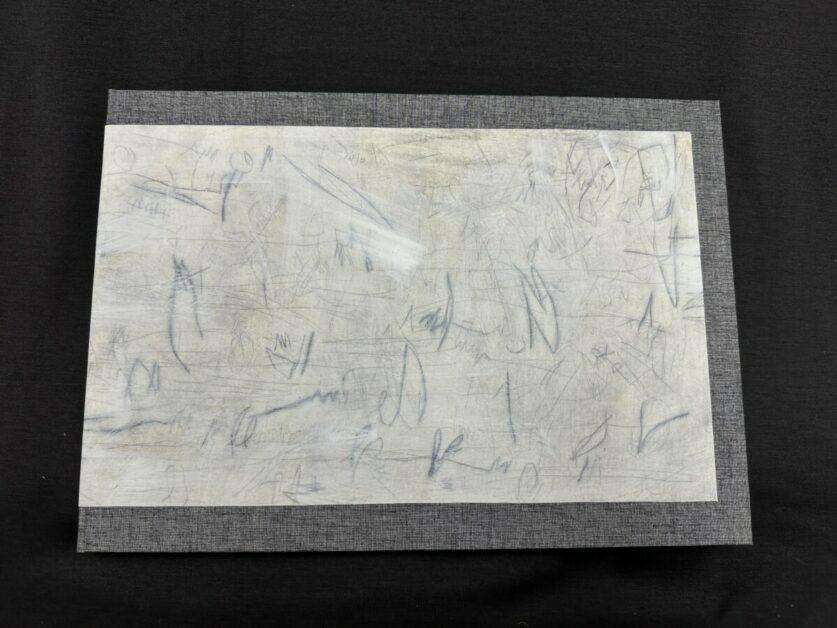
In this new artist’s book, artist Ellen Schechner-Johnson explores the legend of the “Paper Bridge,” seeking to express the historic liminality of Jewish existence, the image of the wandering Jew, the subjects of displacement, homelessness, and disconnection—of belonging and not belonging. The poems by Kadya Molodowsky express this, specifically, and are placed as touchstones or buried treasure within the collaged fragments of text and expressive etchings by the artist. Molodowsky’s poems are printed by letterpress in both Yiddish and English.
This work contains poems by Kadya Molodowsky, and hand painted etchings, drypoints, and collages by Ellen Schechner-Johnson. It is letterpress printed text on handmade paper by Twinrocker and the Morgan Conservatory. It is hand bound in linen and paste paper and housed in a clamshell box mounted with two drypoint prints, 9″ x 13″ in an edition of 30.
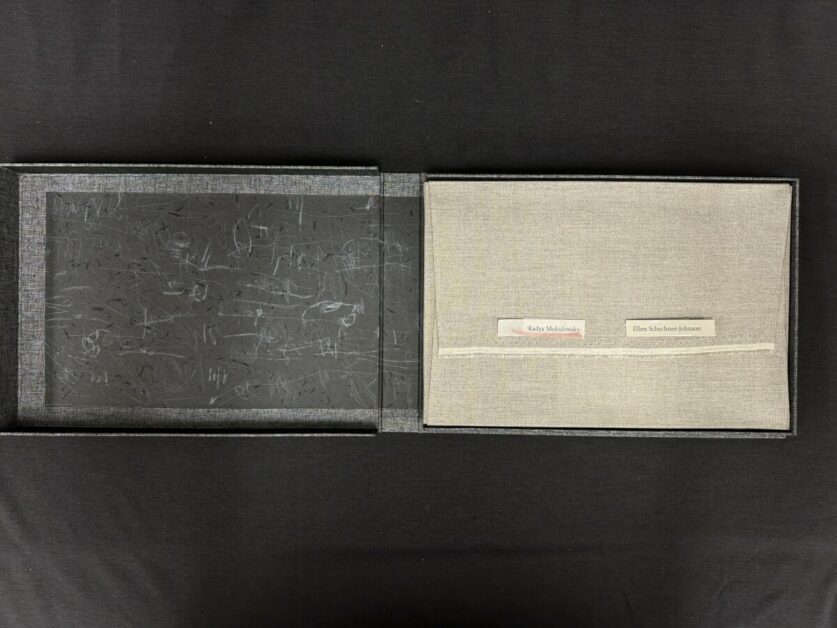
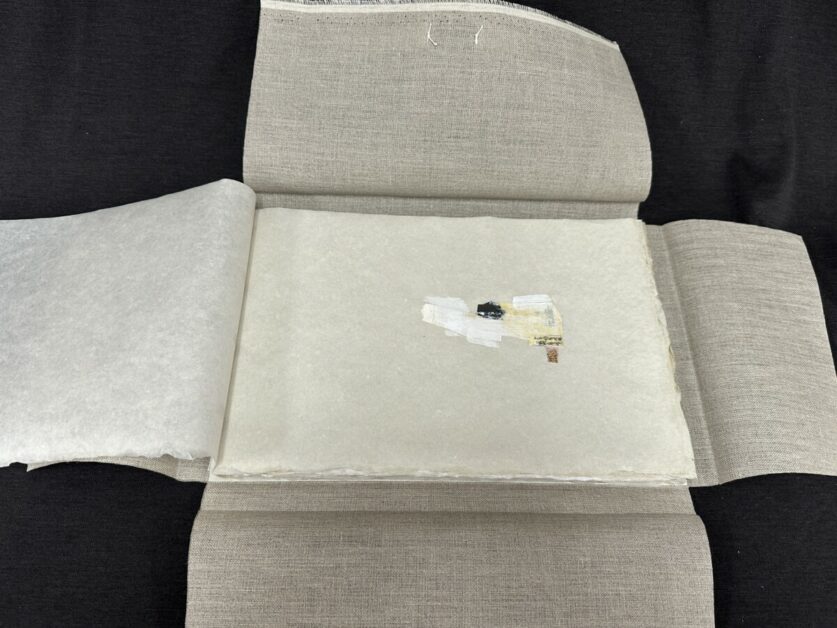
Ellen Schechner-Johnson states that paper is both the principal art material that she works with and it intrigues her as a symbol. She “was reading about the uses of paper in various spiritual practices, and saw the words “the paper bridge.” For many years she researched this image.
“It led me to a book called Paper Bridges, a book of Yiddish poetry by Kadya Molodowsky. She wrote about her memories of Jewish life in Eastern Europe, which she left in 1935, and her transition to life in New York City, where she was deeply involved in the Yiddish literary society of that time.”

“This literary group used the image of the paper bridge to keep connection to the culture of their past that they had had to leave in Europe before and during World War II, preserved by stories, captured on paper—the life of a disappearing culture.”
“Paper and language became a direction for my work on a series of painted and collaged books—books about lostness, about searching for home.”
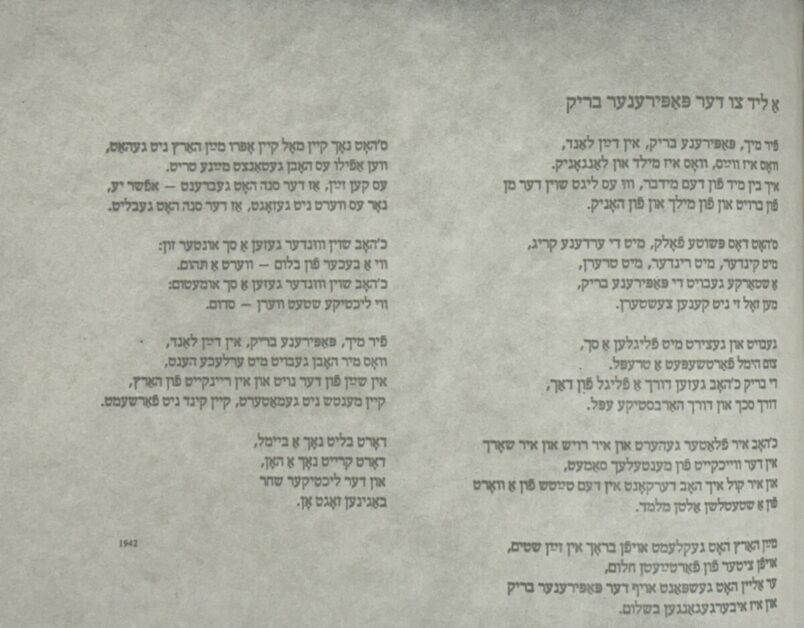
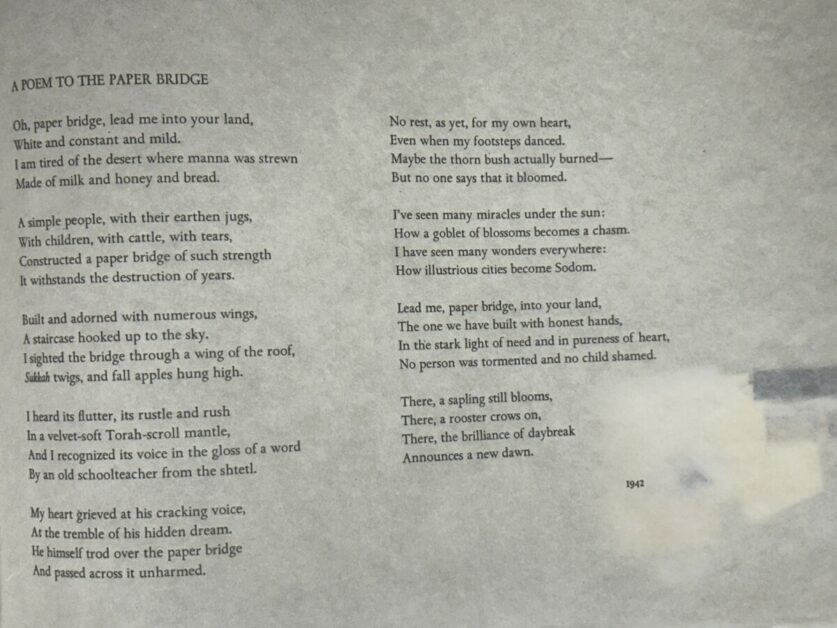
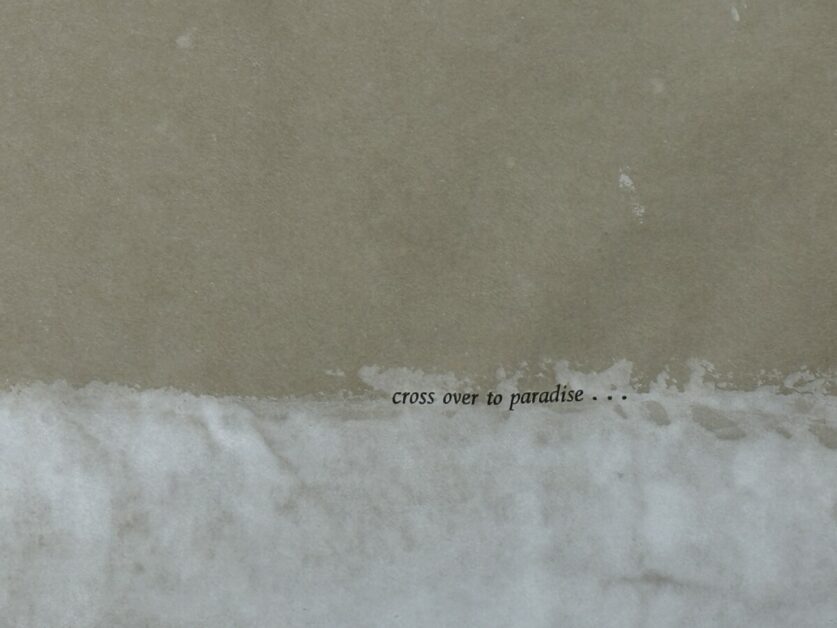
“This present book, thanks to Michele Burgess and Brighton Press, is a continuation of this topic.”
The bridge—as transition—needed a book with an extended, horizontal form.
Of pages—some folded—to reveal and conceal.
Scratching out, covering over, was the process.
Pages of traces, of absence.
—Ellen Schechner-Johnson, 2023